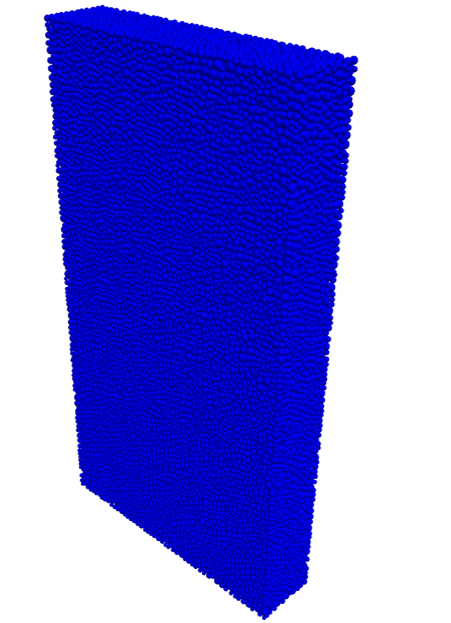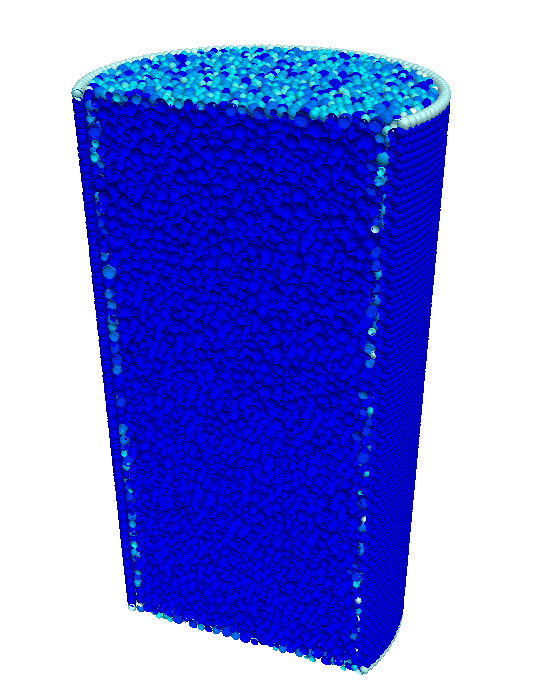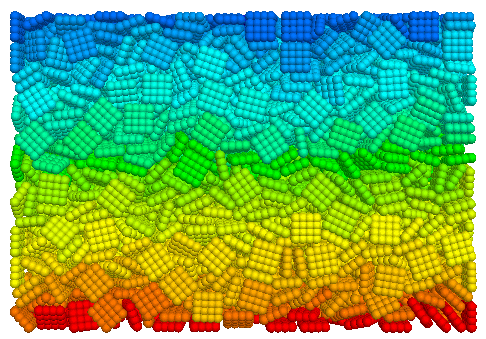Particle breakage and size effect
In granular assemblies, particle breakage significantly alters material properties. We investigated particle breakage at both particle and Representative Elementary Volume (REV) scales. At the particle, we have elaborated the shielding and size effects during single particle crushing. At the REV scale, the importance of particle breakage has been demonstrated by simulating laboratory tests with different particle crushability. In particular, the particle size effect, defined as the evolution of the shear strength of a granular specimen with the increase of particle size, is closely related to particle breakage.

Shielding model in DEM

Shielding effect

XCT image based particle breakage model



Effect of particle size




DEM modelling of interface shear test
Effect of particle breakage

Strength of cemented granular materials
This topic aims to understand the micro-mechanisms that drive fracture propagation in cemented granular materials, e.g., concrete, and to assess the roles of the strength of aggregates and of the aggregate-mortar interfacial transition zone (ITZ) on concrete strength. We use the Discrete Element Method (DEM) to model concrete samples. Mortar is represented by a volume of bonded spherical elements. Bonds are governed by a new displacement-softening law. Aggregate centroids are randomly placed in the DEM sample. We use CT scan images of real aggregates to plot 3D aggregate contours. The spherical elements that are contained in 3D contours around the randomly placed centroids are replaced by clusters with aggregate properties.


Brazilian Tests & Uniaxial Compression Tests on Concrete

DEM modelling of interface shear test

Force-displacement contact bond model


Micro-cracks
Behavior of clay particles
In order to clarify the micro-mechanics of clay during compression, the behavior of clay subjected to one-dimensional compression is investigated at the particle scale using the discrete element method (DEM). The flaky clay particles in the simulation are approximated by clumps made of spheres. A new contact model is implemented to account for the double-layer repulsive force, the van der Waals attractive force, and the mechanical contact force. The effect of sphere arrangement in the particle clump is discussed. The DEM model is validated against experimental observations in terms of macroscopic compressibility, particle dip angle as well as the overconsolidated behavior.

Inter-particle force versus particle separation

Clay specimen in 1D compression test

Effect of preconsolidation pressure
